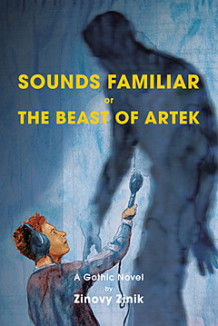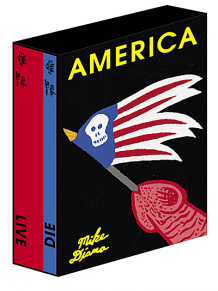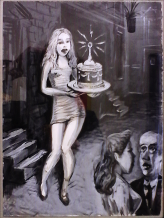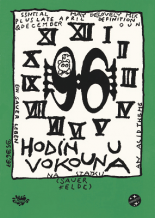|
When I arrived at Haydee Rovirosa Gallery in New York’s Chelsea district to interview the gallery’s curator, Haydee’ Rovirosa, and the newly arrived artist, Javier Velasco, I found neither. They had stepped out to get a tool for the installation of Velasco’s solo show, “Linea Sutil” (Subtle Line). The gallery’s assistant, Jaime Bandres, showed me around the space and later became my invaluable interpreter. I was privileged to see Velasco’s work in a rare moment: halfway unpacked, resting temporarily on the floor and windowsills. “Linea Sutil” is primarily a show about migration, specifically from Mexico to the United States, which serves as a metaphor for the borders and barriers of flesh, faith and feelings. Velasco’s work shows his command of very different materials, with which he harnesses a full spectrum of emotion. The ubiquitous barbed wire is not simply an attention grabber, but instead leads to complex relationships. In most minds this potentially lethal wire is a symbol of incarceration, but through Velasco the wire functions more like the natural design of its organic prototype, the defensive thorn. Velasco’s barbed wire is not spun off a generic spool: In one piece it is presented as streaks of gorgeous blue pigment that form a triptych screen, which has the weight of impassable mountains but appear to be made of cascading tears. There are also barbs that gather into a vein-like mask of thorns and then there are clusters of painterly barbs that seem to float on paper, liberated from their own confining purpose. The closest thing to a physical border in the show is an installation of suspended rows of clear barbed glass. The transparency of the piece is both a tease as well as an illusion. The viewer can easily circle this partial fence, but tends to step back from it, not for fear of being cut but for caution not to break the delicate glass. Sometimes it is difficult to tell which of Velasco’s Mexicans are turned back at the border and which cross into the United States. The point is that neither group realizes their dreams. What one discovers through Velasco’s work is that the barbed wire is never beneficial. It is either banning or entrapping; it wards off hope and traps disillusionment. The collection that especially relays this snare is a set of fine dining plates; each has a hand painted portrait of a Mexican in the center with a halo of decorative barbed wire (or perhaps a crown of thorns) painted around the rim of each plate. If this sad decoration is not enough to shatter the celebratory mood of a table set with these lovely plates, the flatware is outright disturbing as the elegant forks and spoons end in a set of silver fishhooks. These aren’t merely surreal utensils like Meret Oppenheim’s “Object: Breakfast in Fur,” but instead have a real-life utilitarian presence. Whereas the pacific blue portraits of the Mexicans on the plates seem symbolic a small collection of rougher red portraits of immigrants seem closer to trials of the border crossers. There are no references to the barbed wire in this series but the red pigment and the fact that this pigment is indeed iodine, dramatize the cutting of the barbs and the need to disinfect wounds. From this series we can read more into the most graphic pieces of the show: two, larger than life portraits of young men’s bodies, which are pierced by Velasco’s tears; long frozen streaks of clear glass. Tears, another theme in much of his work, also fall from unexpected places, like the buttonhole of a shirt collar, because as Velasco explains, “Men are not supposed to cry.” The most moving tears fall down over the gallery’s windows, facing the Hudson River, which flows south. It is hard not to become sad when you look out through these tears because they make you think about reasons to cry. The tears that rain down on the subjects of the photographs pierce various parts of their bodies. These men are simultaneously mourned and mourning, missed and missing. Isolated from this show, I would understand these portraits directly; there is physical pain that swells with sadness and longing. Referring back to the iodine portraits and looking at them from across the gallery through the glass fence, these piercings seem to be the parts of the men that got snared in the barbs and never healed. Whereas the iodine and plate portraits give faces to the immigrants, these sharp photographs evoke a very sensual feel of disrupted love. A large photograph, in fact the first thing you see upon entering the gallery, is of a woman fastening a cilice around her leg, with another cilice already over her exposed breast. This specific, extreme Catholic contraption is one of several Christian images that appear in the show. There is also a monstrance Velasco has retrofitted with a miniature flat screen, in the center of which we find a suffering Christ, animated in a video loop. He is trapped like a genie in a bottle but he is not patiently waiting to be released: he is wild and claustrophobic. His suffering is from all the trappings of Catholic pomp and ceremony and the superhuman expectations bestowed on him for millennia. Another religious piece is a crown of glass thorns resting on an elegant and plush bright red pillow. On it, embroidered in gold, are the letters “HIV.” This crown of thorns has a retail countertop presence because it is new and it shines in the bright gallery light. Its presentation seems to be set up for a coronation ceremony. But who would kneel before it to bear the burden of sin and infection? Velasco’s most perplexing piece literally hangs in the back gallery, directly across from the monstrance. It is simultaneously repulsive and stimulating. Whereas the other works have layers of meaning beneath the immediate visual surface, this one has many graphic cues. The piece is a clear, suspended clothing rack on which Velasco has hung 19 custom glass hangers he fashioned, each bearing an article of clothing. From afar the material appears to be fine chamois but upon inspection one finds thin, fleshy rubber that has been cast from body parts. Some of these pieces resemble nylon stockings or latex gloves while others are sexy halter tops or corsets. You simultaneously see body scalpings, provocative lingerie and fleshy souvenirs. The wardrobe brings to mind crimes of death camps, rape and mutilation, even though it has a high-fashion look. Each piece has a tag attached to it that is both a fashion label and a morgue I.D. On the tag is a small photograph of the actual body (part) it was cast from and the following categories typed in and filled out in handwriting (in Spanish): Gender: Age: Height: Weight: Region of Skin: Because this rack hangs across from the monstrance, Velasco’s male and female sheddings introduce the idea of flesh as a barrier, across which sensuality and sin, modesty and shamelessness are traded. We are also reminded that the opportunity to shed all the trappings of morality and sexual bias can be as simple as pulling off a pair of socks. Velasco’s discussion of a religion that focuses so much on earthly suffering offers quite an interesting perspective into the will and endurance of a border crossing. Of course the main incentive is monetary and the human desire to improve one’s lot in this world, but is the crossing really an act of faith and an extreme passion play? Certainly all of the elements in Velasco’s show suggest this: the “subtle lines” between barbed wire and a crown of thorns, blood and purification, illusion and disillusion. If this is in the minds of the border crossers it is certainly not conscious to the Mexican government, which in the past year created and distributed a palm-sized cartoon book ‘Guia Del Migrante Mexicano’ for citizens about to make the journey. It is not a warning pamphlet and it is certainly not a legal framework. It is, in fact, a survival guide. This publication, in the talented hands of Velasco, becomes his most loaded piece. To begin with, he created a hinged tin case for the comic and metal-punched the cover, giving it a more permanent place in this world as well as a bit of folkloric flair. From here Velasco pulls all the stops and shows off his intelligent humor and mischievous wit by having the words of the comic sung as a grand aria. A recording of countertenor Santiago Cumplido’s performance of “La Opera para Migrantes Mexicanos” at the Spanish Embassy in Mexico is played on a plasma screen in the gallery. What is interesting about this piece is that this is the only openly political work in the show and yet there is nothing obviously visual about it. Velasco’s work is not protest or propaganda art and so, in being visually apolitical Velasco is extremely political. He knows that his influence works at a much deeper level. The opera is not the only place in the show that language appears. There are also books: one spotted with glass tears and three pierced by twists of clear barbed glass. The books are from 19th France, filled with writings on morality. The glass barbs grow out of the pages as trappings of the words. Whereas the glass fence makes the visible, invisible, these strands do just the opposite; they materialize the between-the-lines feelings that contradict the moral lessons. Velasco’s work is the perfect curatorial statement for Rovirosa whose gallery seeks to bring challenging conceptual art to New York. A week prior to the opening of Linea Sutil, Haydee Rovirosa Gallery invited the public in to their space to see Velasco in action, assembling some pieces and installing his work. Seeing the show on opening night made me think of it not so much as installed as unpacked. Though Velasco can approach the Mexican dilemma from a personal experience: having grown up in La Linea de la Concepcion, a town in Spain that bordered powerful Gibraltar, there is a whole, perhaps entirely unconscious subtheme to “Linea Sutil:” that of the migration of the artist and his work. It would be unfortunate to miss the detail that Velasco’s work was detained for a week by US customs and that it was only released when Rovirosa swooped in and declared it as “educational material.” Upon hearing this I joked to Rovirosa that Velasco could have had a show at US customs that week but perhaps the US officials saw his work in the most appropriate manner, during their dutiful inspection. Not to overlook the work at hand, but it must be a pleasant spin-off to a conceptual artist for his passage to create another dialogue about a more theoretical kind of migration across endless rows of borders: the migration of art and ideas.


Рекомендуемые статьи

|
|
There’s 130 kilos of fat, muscles, brain & raw power on the Serbian contemporary art scene, all molded together into a 175-cm tall, 44-year-old body. It’s owner is known by a countless number of different names, including Bamboo, Mexican, Groom, Big Pain in the Ass, but most of all he’s known as MICROBE!… Hero of the losers, fighter for the rights of the dispossessed, folk artist, entertainer…
|

|
|
“A person must shake someone’s hand three times while gazing intently into their eyes. That’s the key to memorizing their name with certainty. It is in this way that I’ve remembered the names of 5,000 people who have been to the Horse Hospital,” Jim Hollands told me. Hollands is an experimental filmmaker, musician and curator. In his childhood, he suffered through tough social situations and…
|

|
|
We’re constantly hearing that someone would like to do some joint project, organize something together, some event, but… damn, how to put it... we really like what you’re doing but it might piss someone off back home. Sure, it’s true that every now and then someone gets kicked out of this institution or that institute for organizing something with Divus, but weren’t they actually terribly self…
|
|

































 We Are Rising National Gallery For You! Go to Kyjov by Krásná Lípa no.37.
We Are Rising National Gallery For You! Go to Kyjov by Krásná Lípa no.37.
Комментарии
Статья не была прокомментированаДобавить новый комментарий